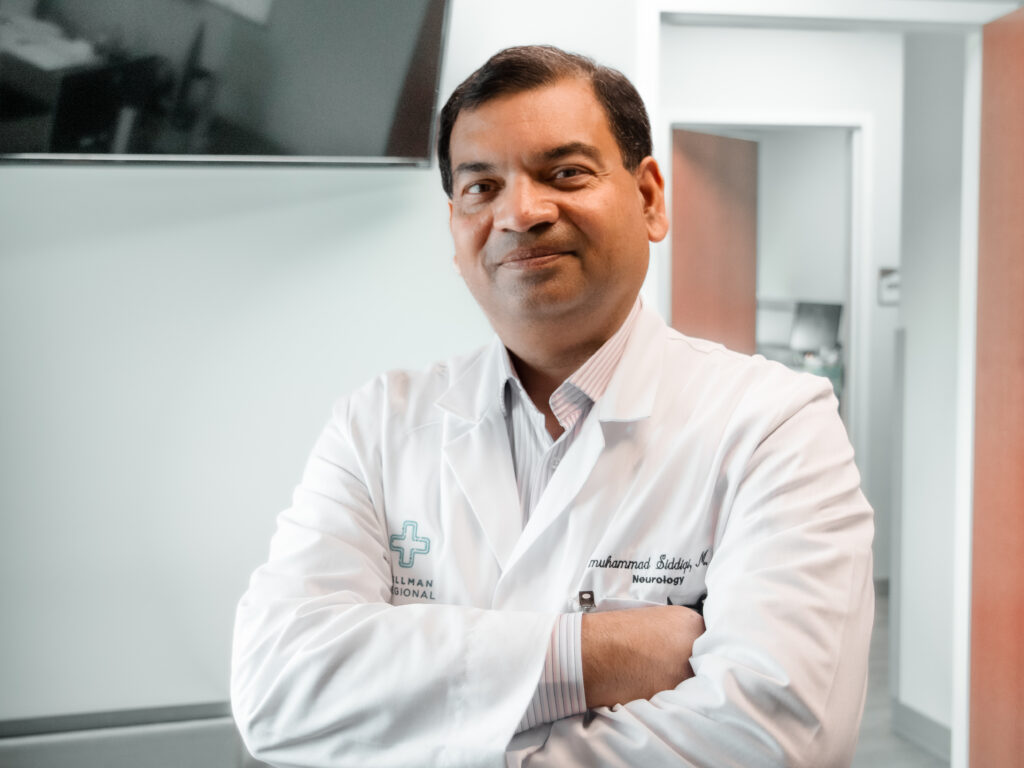
Know the Controllable Risk Factors of Stroke
May is National Stroke Awareness Month. Across the nation, organizations are working to increase awareness about stroke, the signs and symptoms and the treatment options available. Sometimes the best treatment method is the least talked about – prevention.
Fortunately, there is little mystery as to why stroke occurs, and prevention is easier than you might think.
Certain risk factors for stroke are outside your control such as aging, but there are many risk factors you can influence. This includes managing treatable diseases that greatly increase your likelihood of having a stroke.
• High blood pressure. High blood pressure (hypertension) is a major risk factor for stroke because it causes the heart to pump harder to move blood throughout the body. This puts unnecessary strain on the walls of your blood vessels and causes them to thicken, increasing the likelihood that build-up will break off and travel to the brain where it can cause a stroke. High blood pressure is also the number one cause of a different type of stroke known as Hemorrhagic stroke where a ruptured blood vessel causes bleeding in the brain. For most people, high blood pressure can be prevented or controlled through diet, exercise, and/or medication.
• High cholesterol. Cholesterol is a fatty substance made by the body to form cell membranes, hormones and vitamin D. When too much bad cholesterol is present, it can cause plaque build-up. Plaque can clog your arteries and block normal blood flow to the brain, resulting in a stroke. Eating healthy, maintaining a healthy weight and exercising regularly can all help prevent high cholesterol.
• Diabetes. People with diabetes are up to four times more likely to have a stroke than those without diabetes, because they tend to have health problems that are also stroke risk factors such as uncontrolled hypertension and high cholesterol. If stroke occurs, brain damage can also be more severe if blood sugar is high at the time. Effectively managing your diabetes can greatly reduce your chances of having a stroke.
There are also several lifestyle habits that can impact your risk for stroke.
• Smoking. Smoking doubles your risk of stroke by reducing the amount of oxygen in your blood, causing the heart to work harder, and increasing the amount of plaque build-up in your arteries. This allows blood clots to form more easily and increases the chances of plaque build-up interfering with blood flow to the brain and causing a stroke. If you stop smoking, you greatly reduce this risk.
• Heavy alcohol use. Scientists are finding that drinking more than two drinks per day may increase your risk of stroke by 50 percent. It can also increase your risks for heart disease, thereby further increasing your risk for stroke. However, some studies suggest that moderate consumption can have a positive impact by increasing good cholesterol (HDL) levels. It is best to consult with your primary care physician about the health risks and benefits of alcohol consumption.
• Obesity. Excessive weight can put a strain on the circulatory system and make you more likely to have high cholesterol, high blood pressure and diabetes – all of which increase your risk of stroke. Regular physical activity and a healthy diet can help control weight gain, strengthen the heart, and decrease your likelihood of developing many of the common diseases associated with stroke.
In the event that stroke does occur, it is important to recognize the symptoms and call 911 for help immediately. Stroke is the leading cause of adult disability and the fourth leading cause of death in the U.S. Recognizing the signs and symptoms of stroke in order to respond immediately is critical.
To do this, remember the acronym FAST:
• F – Face. Does one side of the face droop when the person is asked to smile?
• A – Arms. Does the person have numbness or weakness on one side of the body?
• S – Speech. Is their speech slurred, or are they having difficulty speaking?
• T – Time. If you answer yes to any of these questions, call 911 immediately.
Dr. Muhammad Siddiqi is a neurologist at Cullman Regional with over 30 years of experience. To learn more about Dr. Siddiqi, visit CullmanRegionalMedicalGroup.com